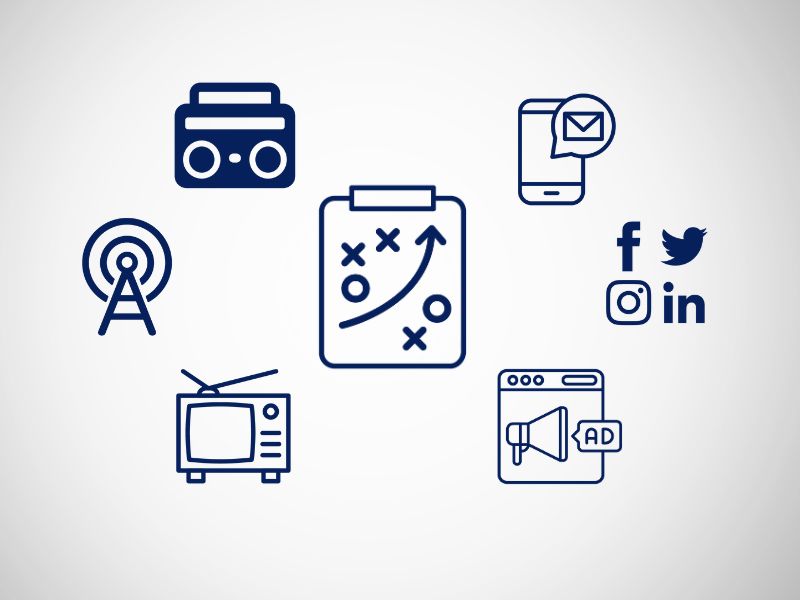
Brand Ambassadors vs. Influencers

Influencers. It’s a buzz word we’ve all been hearing. Many well-known brands, from H&M to Sprint to Naked Juice, are incorporating it into their marketing strategy. According to a recent study, 79% of brands plan to assign a budget to influencer marketing this year. But what’s really the deal with influencers? Are there different types of influencers? How are they different from brand ambassadors? And on which should your brand be focusing?
The main factor that separates these popular terms is their current involvement with the brand. We’ll talk more about this later. But first, why the heck are so many brands carving out marketing dollars for their social influencer campaigns? A recent study by Olapic and Cite Research shows that out of 5,000 social media users surveyed, over half of them say they trust other social media users because “they’re more authentic and trustworthy than brand-owned creative.”
On average, a staggering 40% of consumers admitted to purchasing a product they’d seen on an influencer’s YouTube channel, Twitter or Instagram account. Because of their believability coupled with their frequent visibility, brands are smart to look to influential people, or even just their loyal fans, to showcase their products.
What is an influencer?
An influencer is someone who has a following and actively engages with a particular niche. This level of engagement means that often times they have the power to affect purchase decisions. Category examples include foodies, fashionistas, travelers, moms, and event planners – just to name a few.
Quick facts about influencers:
- When to use: Brands should view influencers as reach tools. They’re limited in their ability to create loyalists, but their popularity generally leads to widespread exposure to folks who aren’t familiar or engaged with your brand. Utilize influencers if your brand’s goal is short-term traffic boosts, a bump in impressions, or a bump in brand awareness.
- Brand connection: It’s likely that the influencer had no contact or even affinity with the brand before the partnership, but their presence on social media and online make them an investment of choice.
- Follower size: Influencers can come in a variety of sizes, from micro-influencers with fewer than 200 followers all the way to celebrity status with millions of followers.
- Working with an influencer: After careful vetting and metrics are aligned, a contract is typically made between the influencer and the brand.
- Exclusivity: It’s important to note that an influencer may post about multiple products within their niche category, not just your brand.
What is a brand ambassador?
A brand ambassador is notably different from an influencer. Ambassadors are individuals who are very familiar and deeply engaged with your brand. They often post about or represent the brand in a positive light and by doing so they help to increase brand awareness and encourage trial. This person may or may not be hired by the brand, and typically has a long-term relationship with the brand.
Quick facts about ambassadors:
- When to use: These social personalities are much more focused on engagement with their fan base and creating loyalists.
- Brand connection: A brand ambassador is typically someone who is already familiar with the brand, a loyal user or even a fan. Sometimes they will spontaneously talk about a brand to their friends and followers.
- Follower size: Their audiences are mostly composed of friends and friends of friends. Think 2,000 followers, not 200,000. But because their followers have a closer relationship to the ambassador, there may be a deeper connection between the two. Their ability to influence purchase behavior should not be overlooked. This narrow group of followers is very likely to be actively engaged and responsive to the ambassador’s content.
- Working with a brand ambassador: Because people often become ambassadors for brands they’re already loyal to, it can be easier for your brand to create a lasting partnership. In an ambassador’s eyes, a simple reach out from a brand they love is often more important to them than monetary compensation in exchange for posts. When AdWeek asked social creators what they want in return from marketers, 90% said free products or services from the brand. In other words, an ambassador could be motivated by “compensation” in the form of getting to try a new LTO before it’s launched, being asked for input on potential new products, given gear store items, and having access to private brand events.
Quality over quantity
When it comes to influential people on social media, number of followers isn’t everything. What’s far more important is the level of engagement they receive on each post. Shake Shack, for example, used a strategy of recruiting 3,200 micro-influencers, generating an average of just 6,750 followers each. Proving there’s more than one way to reach your metrics.
For both influencers and ambassadors, the strategy must start with an objective and a clear understanding of how to measure success. Focus your marketing dollars on a social campaign that fits your goal. If the objective is raising awareness and growing followers, influencers may be the way to go. But if your goal is to increase frequency of visits and strengthen loyalty, a brand ambassador approach may be a better fit. Either way, it is far more important to reach the people that count, than to count the people you reach.
Download our handy infographic to reference the distinctions between brand influencers and ambassadors.



.jpg)
